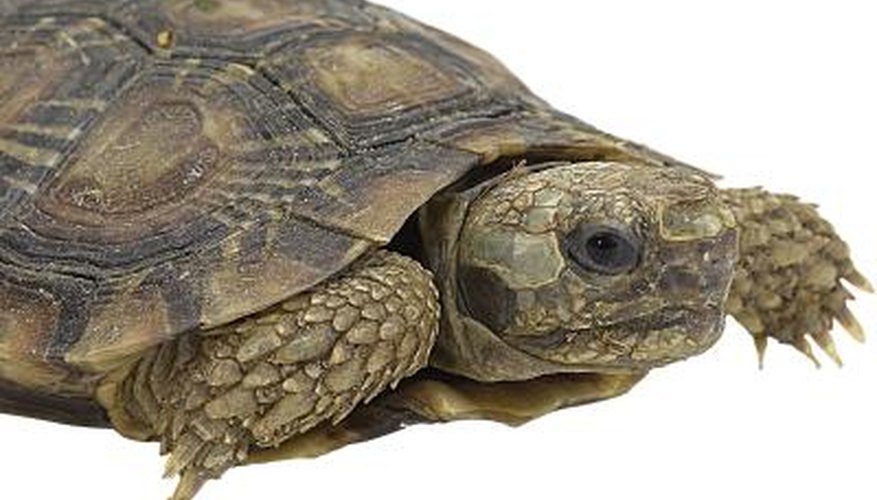All turtles, tortoises and terrapins are similar in that they are reptiles. They lay eggs to reproduce and are cold blooded; meaning that they cannot regulate their own body temperature without the aid of outside sources. The different species' names reflect their different habitats. Turtles spend most of their lives in water and are adapted for aquatic life. Tortoises are strictly land dwellers. Terrapins spend time in both water and on land. There are several steps used to determine if a terrapin is male or female, as it is considered the most difficult species in North America to sex.
- All turtles, tortoises and terrapins are similar in that they are reptiles.
Look at the length of the tail. Males generally have larger and longer tails than females. When fully developed, a male's tail will be approximately three times the size of a female's. The female has a tail with a short base, tapering down into an increasingly skinny point. Males tails are approximately one inch below the bottom of the plastron, which is the bony plate on the underside of the shell. Their cloacal opening, where they excrete waste from, is further from the base than females.
Evaluate the height of the shell. A female's shell has a higher dome on the carapace, or top portion of the shell. In comparison, males tend to have much flatter shells.
- Look at the length of the tail.
- A female's shell has a higher dome on the carapace, or top portion of the shell.
Look at the size of the head. Males have skinny necks and small heads, while females have large and bulky heads.
Evaluate the overall appearance and size. Fully mature female terrapins are larger than the males, and average six to nine inches long. Males are rarely longer than five inches. In general, the female appears bulky, as compared to the male that looks more thin and streamlined.
TIP
Males do not have the characteristic long fingernails of other species. It is nearly impossible to determine the sex of a terrapin before it is fully mature. Average age of maturity is between 2 and 3 years old. Shell colourings and markings do not distinguish the sex of a terrapin. Only females leave the aquatic environment to lay eggs on land, typically between the months of May and July. Sex of a terrapin is determined during the incubation process. Ideal temperatures for incubation range from 26.6 to 29.4 degrees C. Males are hatched at lower temperatures while females from higher temperatures.
